#transportation improvement
Explore tagged Tumblr posts
Text
Jamshedpur's Mango Flyover Project Breaks Ground
Minister Banna Gupta initiates transformative infrastructure development Jamshedpur set for traffic relief with 2.8km elevated corridor and Rs. 252 crore initial budget. JAMSHEDPUR – Health Minister Banna Gupta launched Mango Flyover construction to ease congestion and improve city connectivity. The Mango Flyover project in Jamshedpur has officially commenced, marking a significant milestone in…
#जनजीवन#Banna Gupta#City Planning#civic projects#Jamshedpur Infrastructure#Jharkhand Politics#Life#Mango flyover#Public Works#traffic decongestion#transportation improvement#Urban Development
0 notes
Text









I made a comic of one of my favorite Network Effect scenes!
This was so fun!! I love Murderbot!
#it has guns built into its arms and yet it chooses the strategy of hitting the hostile hard with fist#I mean valid it worked#I really enjoyed doing this#I think it helped me improve somewhat as well#the murderbot diaries#murderbot#secunit#tmbd#mbd#network effect#martha wells#tmbd fanart#trafosu#murderbot fanart#murderbot comic#asshole research transport#ART#perihelion#amena
174 notes
·
View notes
Text
more clone^2 memes because i think they're funny
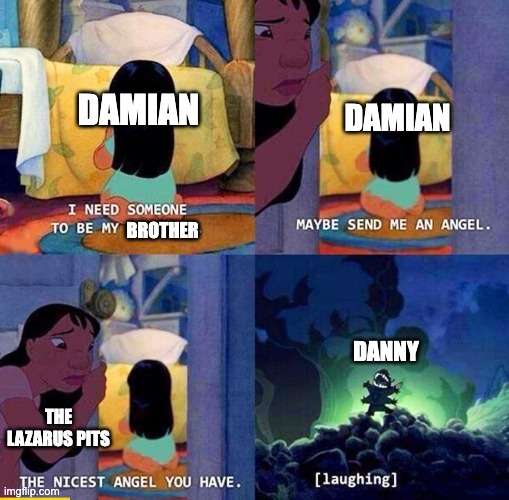

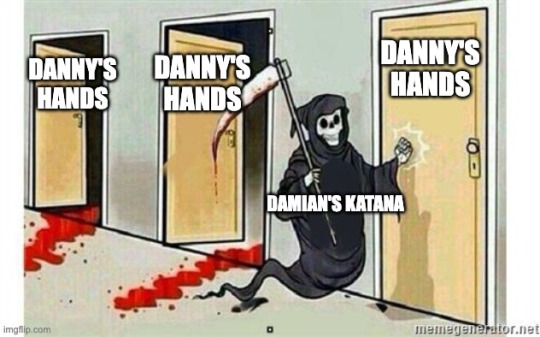

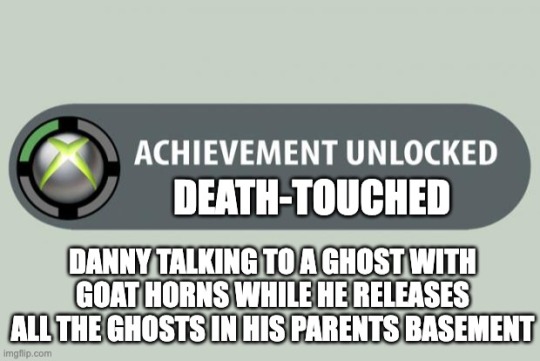
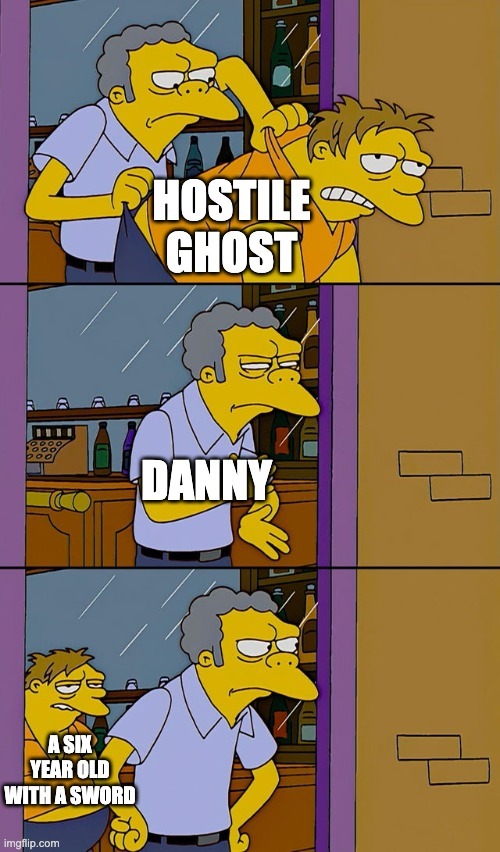
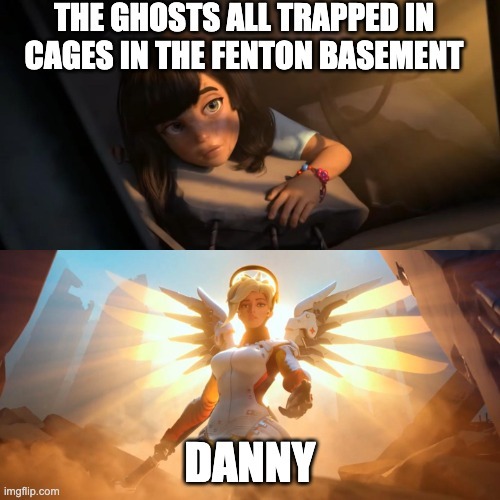
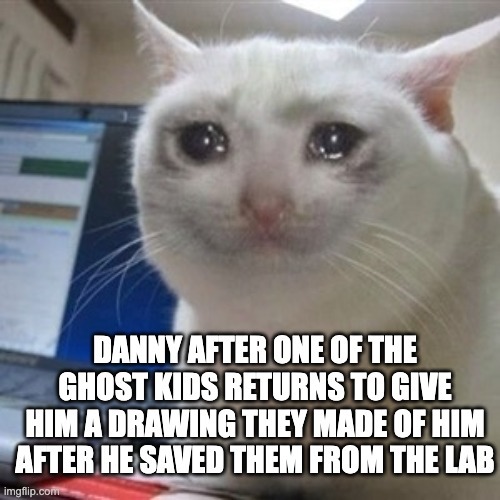
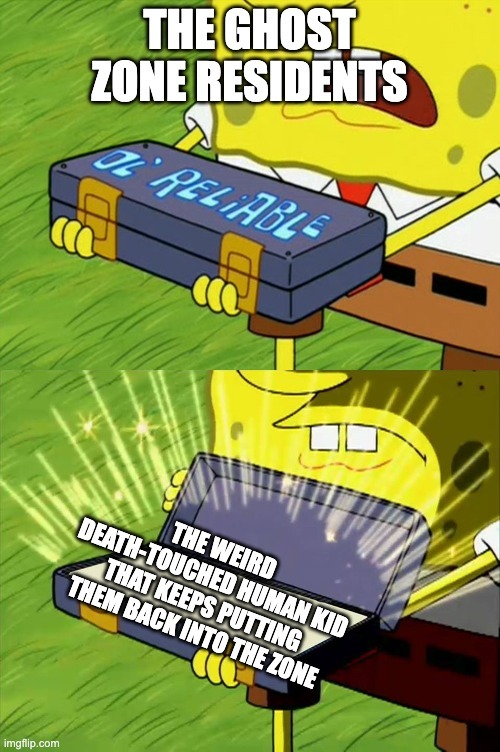

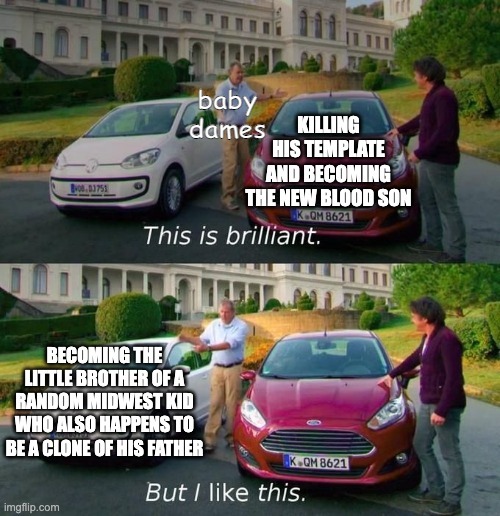
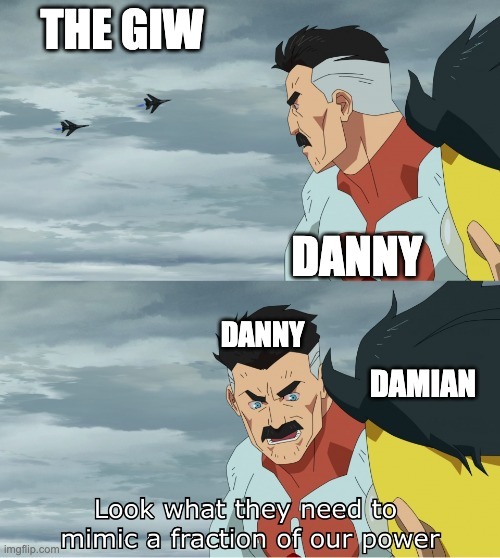
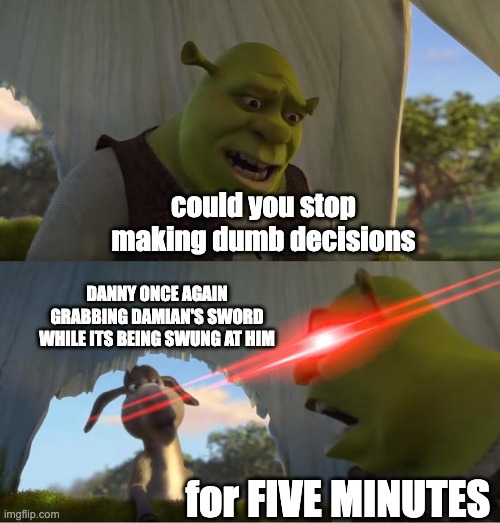
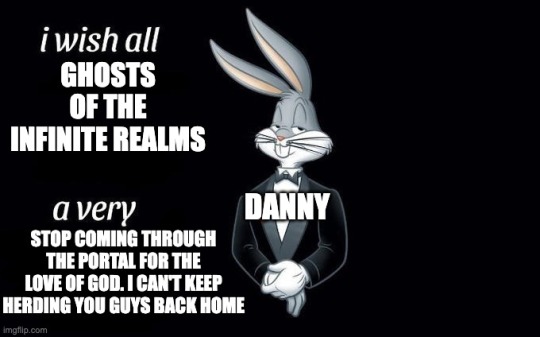

#dpxdc#dp x dc#dp x dc crossover#dpxdc crossover#dpdc#clone^2#danny fenton is not the ghost king#so canon to clone^2 and clone damian the portal that ends up transporting damian to amity park is left pr ambiguous#so really how he got there could be one of many things whether it be through divine intervention or clockwork's doing or hell#it could've also been quite literally the 1 in 1 millionth chance that a natural portal opened up beneath him and sent him to amity#and was a happy accident#but the idea that the laz pits or another adjacent such entity heard damian wanting an older brother (he meant og damian but oops never-#specified) and then sends him to the one person who could fulfill that wish and make him happy at the same time.#was really funny to me within the context of the lilo and stitch meme. the meme can also be seen the other way around with danny as lilo#and damian as stitch. but danny being stitch was infinitely funnier and ~technically~ more accurate imo#danny technically IS a nice angel but also. he's a developing menace to society (just ask wes) and he's going to make damian one too#danny being from the midwest means he has a midwestern accent and thats not something the bats know how to handle when they finally meet hi#hey look at that! my meme making skills are steadily improving. im no longer making the same joke six different times in different formats#those first two images i made a few days ago the rest i made in the last thirty minutes in a spur of clone^2 induced inspiration#and procrastination of writing the cfau rewrite of the first post. we are 10k words deep folks and just barely got past the 1st gala reunio#dunking on the giw is a god-given right and danny WILL pass it down to damian
771 notes
·
View notes
Text

#Mirage Express#the murder of sonic the hedgehog#tmosth#sonic#sonic series#sonic fandom#sonic the hedgehog#adoption poll#no tags submitted#no image submitted#submitter asked to include an image with the hand#but i'm really sorry#i couldn't find an image with the hands#that also made it obvious to non-sonic fans that this is a train#anyway vote in this gay train so our public transport can improve
31 notes
·
View notes
Text
Interesting that the # of licensed drivers in the US is decreasing
#not really ig bc urbanization is still a force#but it remains up in the air whether we're going to see improvements in public transportation over the next couple decades afaik#also i think a lot of the migration to cities rn is cities that have definitively poor public transportation e.g. houston#or my own beloved charlotte (not beloved)#from experience i know that it can actually be more difficult & less safe to navigate without a car in those places than in rural areas#(btw just looked it up and confirmed it is this sort of city that's seeing population growth)#(mostly)#soo back to why are licensed driver numbers dropping#i think i want to pin it on lack of resources?#plus this is mostly an issue among young adults many of whom weren't physically at school during the time when students take driving classes#this interests me bc people have always thought it was really weird i never learned to drive but i've noticed more and more ppl#especially young women#talking about not knowing how to drive
8 notes
·
View notes
Text
i had swimmers ear for a week, but its been another week and my hearing is still not fully back yet ?? i thought it was wax buildup, but i dont think so anymore. the local doctors r too busy to take walk-ins and they dont answer my calls. im soo tired, i just want this to be over with !!!!!
#if by monday i dont see even a slight improvement#ill ask my mum to take me to another doctor#theres one thats a 15min drive away#we just havent gone bc of transport problems#like the local one is literally a 5 minute walk#shakes ur shoulders. im going crazy#tomfoolery!
2 notes
·
View notes
Text
just remembered how i used to hang out with bunch of soundcloud rappers and they would have their rap sessions in the middle of the hang outs that happened at like 3am and i would be there tired as hell, just listening to the shitty rapping and they’d ask my feedback and i would be there like pls this is terrible Do 👏 BETTER 👏

#just saw one of them post a snapchat story of him rapping#and i felt like i was transported to that musty room#where we used to hang out and#like he hasn’t improved at all from those times shdjdnd
13 notes
·
View notes
Text
The five poll guarantees implemented by the Congress government are free travel for women across the state in non-AC state-run buses: 200 units of free power per month; Rs 2,000 per month for each female head of the family; 10 kg of food grains (rice, ragi, jowar, millet) per month to BPL (below poverty line) families; Rs 3,000 per month for two years to unemployed graduates; and Rs 1,500 per month for two years to unemployed diploma holders.
Expenditure on five guarantees
In 2023-24, the government launched four guarantee schemes under various departments. These are (i) Gruha Lakshmi, (ii) Gruha Jyothi, (iii) Shakthi, and (iv) Yuvanidhi. Along with the pre-existing scheme Annabhagya, these comprise five ‘guarantees’ provided to the public. In 2024-25, Rs 53,674 crore is proposed to be spent on these schemes. This is 47% higher than the revised estimates for 2023-24. More than half the allocation has been made towards the Gruha Lakshmi scheme. Under this scheme, women heads of families below the poverty line are given Rs 2,000 monthly. In 2024-25, this scheme has been allocated Rs 28,608 crore, which is 63% of the total estimated expenditure on social welfare and nutrition.
State finances
In February, chief minister Siddaramaiah, who also holds the finance portfolio, presented a revenue-deficit state budget for 2024-25, with total outlay set at Rs 3,71,383 crore. The deficit stood at Rs 27,354 crore, marking the first instance where borrowings in a fiscal year surpassed the Rs 1 lakh crore mark. Siddaramaiah also allocated Rs 52,000 crore towards the implementation of five guarantee schemes for 2024-25.
Some of the BCG short sighted policy recommendations being implemented:


Turns out the freebies are not really free and the brunt of these votebank promises are going to be paid by the average karnataka resident. As for the other BCG recommendations which don't involve cost transfer we'll have to wait and watch.
#desiblr#india#hindublr#indian politics#desi tumblr#india politics#and to think that these buffoons were guaranteeing ₹8500 to certain households in India#ps i don't like bjp pulling this shit either for the whatsboutism folks#industrialise and expand your income tax base instead of transferring your cost of policies through indirect taxes#make public transport cheap not free#dont do direct deposit into bank accounts instead have targeted schemes for improving public health kind of like ayushman yojna
2 notes
·
View notes
Text
MAN i forgot how hard it is to get the incoming kindergarteners to listen sometimes. very sorry that you are so small and your auditory functions are not great yet and also that you probably speak another language at home. i fr need you to put your listening ears on though buddy i can only repeat myself so many times there's thirty other children in this camp group and we've got places to be 😭
#also one of them walked fully naked out of the locker room after pool time today crying nd saying he couldn't change#cause his socks were inside out. come on man. literally let's put our big boy shoes on now#got him sorted out and then he still came out with his shirt on fully inside out And backwards...#will have to work on being more patient and speaking slower tomorrow. that's for me to improve.#going to start putting these kindergarteners in pokeballs for easier transport though if this keeps up dkgjhsdf#important to note that they are Incoming kinders. just finished preschool/tk if they were in preschool/tk. very small still...#but hey man. work with me here. there are only so many of me and there are so so so many of you 😭#valentine notes#also mutuals update!! it's summer so i'm doing summer camps now!!!
5 notes
·
View notes
Text
Therac-25: *exists. Injures many*
Engineers of the past: aw damn. Better not put to much faith in software. It might override its safeguards and kill people! Thanks for the lesson Therac-25!!
Self aggrandizing software bitches: Self driving cars! Remove human error! No mechanical input!
Therac-25: wait. Have you learned NOTHING FROM ME?!
Self driving car enthusiast: We give the robot moral tests to make it choose between killing a baby and a grandma!
Any person with a lick of sense: Just.... Just drive off the road if you can... Bro!
Car bitch: THE CAR STAYS ON THE ROAD! THINK OF THE TROLLEY PROBLEM
Engineers: WE SOLVED THAT!
Another insulting name that I'm using in place of people like Elon Musk: YAY TECHNOLOGY! HUMANS ARE WEAK AND OBSOLETE I AM GOD!
#therac-25#ai#bro#self driving vehicles#i actually hate technology as it is#instead of working to improve human conditions. the people with the money to do things focus on fucking Martians#id be more interested in oh idk... prosthetics?#improving lives#giving freedom and control#not fucking cars#if you REALLY wanna make the roads safer by eliminating a large number of drivers#PUBLIC TRANSPORTATION#jesus fucking christ
4 notes
·
View notes
Text
ADOT’s Critical Road Closures: Impact on Phoenix Commuters and Travelers - Jan. 5-8
The Arizona Department of Transportation has recently made an important announcement that will impact commuters and travelers in the Phoenix area. State Route 143, a crucial thoroughfare, is scheduled for closure between Loop 202 and Interstate 10. In addition to this, the northbound 48th Street/State Route 143 will also experience closures between Broadway Road and University. These closures are…

View On WordPress
2 notes
·
View notes
Photo
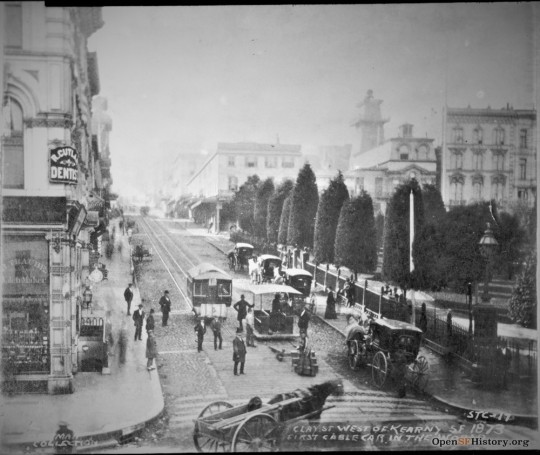
"Clay St. West of Kearny SF 1873 - First Cable Car in the World" In this elevated view west on Clay Street to the Clay St. Cable RR cable car at Kearny Street Terminus, Portsmouth Square can be seen on the right. Signage for the R. Cutlar Dentist, H. Traube watchmaker and jeweler at left. This photo is a detail from Carleton Watkins' stereo card number 2368 (Variant) under the original title: "Clay St. Hill R.R., San Francisco, Cal. Run by A.S. Hallidie's patent Endless Steel Wire Rope and Gripping Attachment. Overcomes an Elevation of 307 feet in a length of 2800 feet. Worst grade, one foot in six" (from the Marilyn Blaisdell Collection).
Chinatown at the Advent of the Cable Car
This year San Francisco marks the sesquicentennial of its cable car system. In the late 19th century, San Francisco experienced rapid urbanization and faced the challenge of its hilly terrain. Traditional horse-drawn streetcars struggled to navigate the steep inclines, necessitating an innovative transportation solution.
In the predawn hours of August 2, 1873, Andrew Smith Hallidie introduced the first successful cable car system in the world. The cable cars utilized an underground cable mechanism to propel the cars along tracks, overcoming the city's hilly landscape. This new mode of transportation revolutionized urban mobility and played a pivotal role in San Francisco's development.
Historian Phil Choy wrote about the Clay Street cable car terminus at Portsmouth Square as follows:
“Following Andrew S. Hallidie’s successful test-run of the first cable car on August [2], 1873, horse-drawn cars were replaced with a cable car on Clay Street. Thereafter, the Chinese called Clay Street ‘Mo Mah Lie Ch’eh,’ which literally means ‘no-horse-drawn-car’ [冇馬拉車; canto: “mou5 maa5 laai1 ce1″]. Starting from the top of Leavenworth Street, the line ended at a turntable at the bottom of Clay and Kearny Streets, to send the car back up the hill.”

California and Montgomery streets, c. 1889. Photographer unknown (from the Martin Behrman Negative Collection / Courtesy of the Golden Gate NRA, Park Archives). The view is west on California across Montgomery, as an Omnibus Railway Co. horsecar #11 passes the Parrott Building, or Parrott Block (1852, Architect Stephen Williams) seen in background. A Chinese man is walking south at the northeast corner of the intersection. The signs for the offices of Equitable Life and Dr. William F. McNutt at 405 Montgomery are visible at right.
The introduction of cable cars in San Francisco had a profound impact on the Chinese community. Several cable car lines conveniently passed through Chinatown, allowing Chinese residents to access transportation. The cable cars provided a reliable means of travel for the community, connecting them to other neighborhoods and employment opportunities initially for domestic workers serving the mansions atop Nob Hill and eventually throughout the city.

Clay Street Cable Car, c. 1873. Photograph by Carleton Watkins and published as “Pacific Coast. 2369″ and by Taber Photo (from the Marilyn Blaisdell collection). In this startling image, patrons and car operators can be seen posing on or alongside cable cars on Clay near Jones Street, except for at least two Chinese men seated in the car at left. Their faces were lost to history because one man placed his hat over his face, while the other inclined his head to avoid the camera’s lens. Watkins' image may be the only extant image showing urban pioneer Chinese actually riding an early cable car, possibly to their jobs as domestic servants for the mansions on Nob Hill.
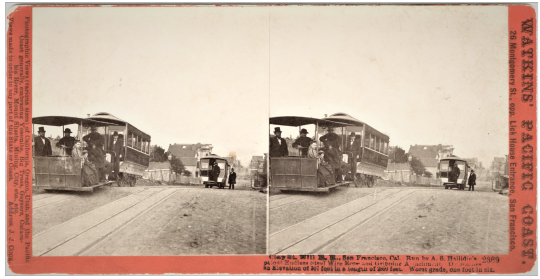
Watkins' stereo card bears the legend: “Clay Street Hill R.R., San Francisco, Cal. Run by A.S. Hallidie's patent Endless Steel Wire Rope and Gripping Attachment. Overcomes an Elevation of 307 feet in a length of 2800 feet. Worst grade, one foot in six. 2369” Photograph by Carleton E. Watkins (from the collection of the San Francisco Public Library).

“At the Corner of Dupont and Jackson Streets” c. 1896 -1906. Photograph by Arnold Genthe (from the Genthe photograph collection, Library of Congress, Prints and Photographs Division). A cable car on the Jackson Street line can be seen at right. “Two girls wearing embroidered holiday wear are crossing the street,” as historian Jack Tchen wrote in his book about Genthe’s Chinatown photos. “The store behind them is a ‘Chinese and Japanese Curios’ store located at 924 Dupont Street, southwest corner. The good-quality, expensive vases in the window display and the sign in English indicate that the store catered especially to tourists. Some such stores were owned by Japanese, but the main reason that both Chinese and Japanese goods were sold in the same store was that the general public could not distinguish between the two cultures.”
(NOTE: Both Genthe’s identification of the intersection of Dupont and Jackson streets and Tchen’s location of the address at 924 Dupont appear INCORRECT for several reasons: (1) Genthe’s photo of the upslope depicts the west or odd-numbered side of the street, and the intersection’s southwest corner; (2) Prior to 1906, the building bearing an address of 943 Dupont occupied the southwest corner of the intersection with Jackson Street;(3) business directories of the time indicated that the Tong Yuen Lai confectionary operated at the 943 address during the 1890’s (and by the 1905 publication of the Chinatown phone directory, the Jong Mee Cigar Store had either co-located or operated solely at the address); (4) local transit historian Emiliano Echeverria observes that Jackson Street served as a horse-drawn streetcar line but such tracks were removed "and 1894 was when they were removed,” which preceded Genthe’s photographic work in San Francisco; (5) the storefront of, and its occupancy by, a curios store at the southwest corner of the intersection of Sacramento and Dupont streets was apparent as confirmed by the city’s July 1885 Chinatown map locating a “C[hinese] merchandise & pawn store” at 625 Dupont Street; (6) the storefront is a closematch to the one seen at the intersection of Dupont and Sacramento streets appearing in the upper-left background of Genthe’s photo “Carrying New Year Presents” (included below); and (7) business and phone directories from 1883 through 1905 showed the Quong Wah Lee & Co. at the 625 Dupont Street address and classified by the Langley directory of 1883 as selling “Fancy Goods - Chinese and Japanese.”

“B 3096 Clay Street Hill, Chinatown, San Francisco” c. 1886. Photograph by Isaiah West Taber (from the Marilyn Blaisdell Collection). In this view east on the south side of Clay Street, and just above Dupont, the trees of Portsmouth Square can in the distance at left, a horsecar can be seen on Kearny and an original Clay Street cable car. The large billboard for Globe Business College and Conservatory of Music in distance. The large vertical sign in Chinese denotes an herbalist or apothecary store.

The view east on Clay Street, c. 1888. (Photographer unknown from the collection of the California Historical Society). A cable car is in the process of crossing Dupont Street and heading west up the hill. The balconies of the Yoot Hong Low restaurant appear at left.
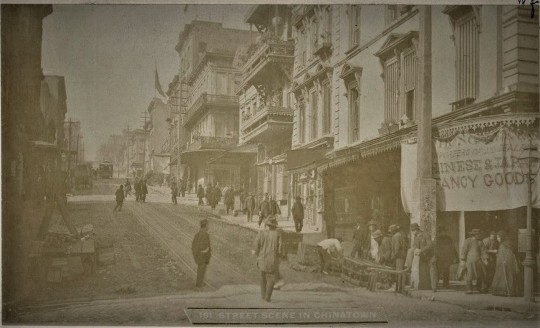
“161 Street Scene in Chinatown,” no date. Photographer unknown (from a private French collection). A cable car can be seen traveling west on Clay passing Stockton Street.

“Chinese Quarter, San Francisco, Cal.” c. 1891. Photograph by A.J. McDonald (from a private collection). A cable car is seen passing the 800-block of Clay Street between Dupont St. and Waverly Place. The decorated balconies of the Yoot Hong Low restaurant can be seen at center.

“B 2807 Lotta’s Fountain, and junction of Market, Kearny a& Geary Streets, S.F.” c. late 1880s. Photograph by Isaiah West Taber (from a private collection). A Market Street Cable Rail car appears in the right foreground. Two Chinese men can be seen in the background at left on the sidewalk between the two lampposts and under the Philadelphia Lager sign.

“Carrying New Year Presents” c. 1900-1905. Photograph by Arnold Genthe (from the Genthe photograph collection, The Library of Congress, Prints and Photographs Division). A cable car can be seen on the hill just behind the head of the young woman in the photo. She appears to have been a servant to the family of prominent merchant Lew Kan. The boy in the photo is Lew Bing Yuen, the older son, who also appears in Genthe’s well-known photo “Children of the High Class.”
The cable cars lines had played a significant role in fostering economic growth within Chinatown before the earthquake and fire of 1906 that destroyed the neighborhood. After the transformation of post-1906 Chinatown into the “Oriental City,” this urban transit network remained crucial to the neighborhood’s integration with the citywide economy. Tourists and locals utilized the cable car system, and Chinese-owned businesses along, and in proximity to, the cable car lines experienced increased patronage. This urban mobility represented by the cable car system, even after its reduction to only two lines, has sustained the Chinese community from it pioneer beginnings to this day.

“San Francisco Cable Car Lines at the Fullest Extent of Operation (1890s)” (courtesy of the Cable Car Museum). As the Cable Car Museum advises here, “Clay Street Hill Railroad was the sole cable car company for 4 years. A former horsecar company, Sutter Street Railroad, developed its own version of Hallidie's patented system and began cable service in 1877, followed by California Street Cable Railroad -1878, Geary Street, Park & Ocean Railroad -1880, Presidio & Ferries Railroad -1882, Market Street Cable Railway -1883, Ferries & Cliff House Railway -1888, and Omnibus Railroad & Cable Company -1889.” At its peak, the San Francisco companies had laid “53 miles of track stretching from the Ferry Building to the Presidio, to Golden Gate Park, to the Castro, to the Mission.”

Published in Germany under the title “The Plaza, near Chinatown, San Francisco, U.S.A.” c. 1890. Photographer unknown (from the Marilyn Blaisdell Collection). In this northwesterly view toward the 700-block of Washington Street, a man walks a child through Portsmouth Square, and a cable car can be seen in the background. By the 1890s, a cable car line had been built on Washington Street, running along the northern edge of the square.
For the Chinese families who began to populate the eastern slopes of Nob and Russian Hills (and the garment workers in the small sewing factories along Pacific Avenue west of Stockton Street), the cable cars served as their principal transit system until the establishment of bus routes such as the Pacific Avenue shuttle (championed by Phil Chin and his Chinatown Transportation Improvement Project crew a half-century ago), and now known as the no. 12 Folsom/Pacific line.

A group of women (at least one of whom has bound feet) disembarks from a cable car in 1908. Photographer unknown (from the collection of the Chinese Historical Society of America). For women with bound feet (including great grandmothers on both sides of my family), the cars represented not only convenience but a necessary travel option for the residents navigating the hilly topography of San Francisco Chinatown.
The clang of cable car bells and the snap of the cable in the tracks remain an integral part of the soundtrack for the several generations of Chinese children who grew up in the greater Chinatown area.
Cable cars symbolized the vital role of urban transportation in fostering connections and opportunities -- providing convenient travel options for the residents of Chinatown, maintaining the neighborhood’s economy during hard times, and tying the segregated Chinese community to the larger city.

“Convergence of Cultures” oil painting by Mian Situ.
[updated 2025-1-17]
#Chinatown and the cable cars#Chinese riding 1873 cable car#Carleton Watkins#Andrew Hallidie#Clay Street cable car line#Chinatown Transportation Improvement Project#Lew Kan#Lew Bing Yuen#Sacramento Street cable car line#Jackson Street cable car line#Market Street Cable Rail line
4 notes
·
View notes
Text
A History of Development and Disruption: Hella Town
Detail of a historic map of Oakland. (Photo thanks to UC Press) This week on Making Contact, we bring you a story of urban planning and how race has shaped American cities. In a new book, Hella Town: Oakland’s History of Development and Disruption, Author Mitchell Schwarzer explores the origins and the lasting impacts of transportation improvements, systemic racism, and regional competition on…

View On WordPress
#Caltrans#Cypress Freeway#Displacement#environmental racism#Gentrification#MacArthur Maze#Mitchell Schwarzer#Oakland#pollution#Southern Pacific Railroad Corridor#systemic racism#transportation improvements#urban planning
2 notes
·
View notes
Text

Haha, hummm, welcome to France, @thegemstonejedi ?
If you're in a big city you'll have public transports. Whether the system is good or not tend to depend on the region and the mayor. Like where I'm from, the system is bonkers like good like absolutely awesome and 100% electric for inside the city (some are still with essence for when they have to go further out), but that's because the mayor is an ecologist (the party) and because the region is globally rich. Also lots of tourists and border with Germany (you can even take the tram to go there, really cool). Where I currently live the metro is fine (fully automated), the tram is ok, the busses hummm the few time I took it it was bad.
We also had a system put in place "recently" in France that forbids too polluting cars to enter city centers so every cities kinda have to up their public transport game since it would mean some people can't get to work in the center depending on their car.
As for outside the city, there are trains and busses, but if it's in the middle of nowhere it gets non-existent too and you need a car.
And for half the subscription paid by the employer, it's for both cities (the one I'm from and the one I'm currently in). The first was a retirement house and the second was my university. I have no idea however if it's a global law or not. And for internships I have no idea how it works on that point because under 2 months you don't have to be paid (and also I never did any normal ones, the only ones I did was as a bénévole for archaeological digs because I needed to do several weeks to validate a class in uni).
.
Big point though is that France is much smaller so automatically the cities and villages are closer, so I guess that's why the public transports are better?
Paying only a part of the public transport subscription though has always been the normal thing to me because even in secondary school and high school, if you had to have a subscription because you lived too far, the department paid all of it (secondary school) or half of it (high school).
.
Also sorry I tend to ramble badly/infodump.
#Accessibility wise though there are still some improvements to do#Globally it's ok in both city I lived in but omg Paris is inaccessible but downright awful (you can't take the metro AT ALL)#I also need to specify that I didn't wanted to be patronizing or something like that#I just wanted to explain in detail because... well... I tend to always explain in detail?#Public transports in France is good enough that my father who doesn't have a a driving license only faces mild problems when he goes around#also someone explains to me why I do a fucking essay each time I answer to people???
2 notes
·
View notes
Text

Here is my Easter dinner! We had cranberry sauce, gravy, sweet potatoes, stuffing, and turkey. It all was delicious! I ate both legs and a wing, plus extra white meat, lol. After an entire Lenten season of abstinence from basically everything -- alcohol, all drugs, caffeine, sex, and sugar -- this was an amazing return to normalcy. Tomorrow is Discount Easter Candy Day!
#Notes by Nikki#food#Easter#Easter 2023#holidays#holidays 2023#cranberry sauce#turkey#stuffing#dressing#sweet potatoes#savory#sweet#dinner#supper#lunch#gravy#brown gravy#cooking#I'm not Catholic or even Christian#not anymore#but I wanted to see if I could do Lent again#especially with no incentives other than improving my health/spirituality and testing my willpower against my cravings#other than a few small slip ups I did really well#in fairness#what with being likely asexual/aromantic and chronically single with no transportation and no desire to bring anyone home#not a lot of incentive to go get laid lol
5 notes
·
View notes
Text

Please re-blog to widen the data sample! I might use this for my statistics project at the end of the semester, and every answer is a great help :).
Please share in the tags what you picked and why if you're so inclined.
#I have access to public transportation but I won't use it unless improved#Too dangerous for me alone#I will rather walk but somehow that's worse for everyone else#I can't believe the timing of the next post
18K notes
·
View notes